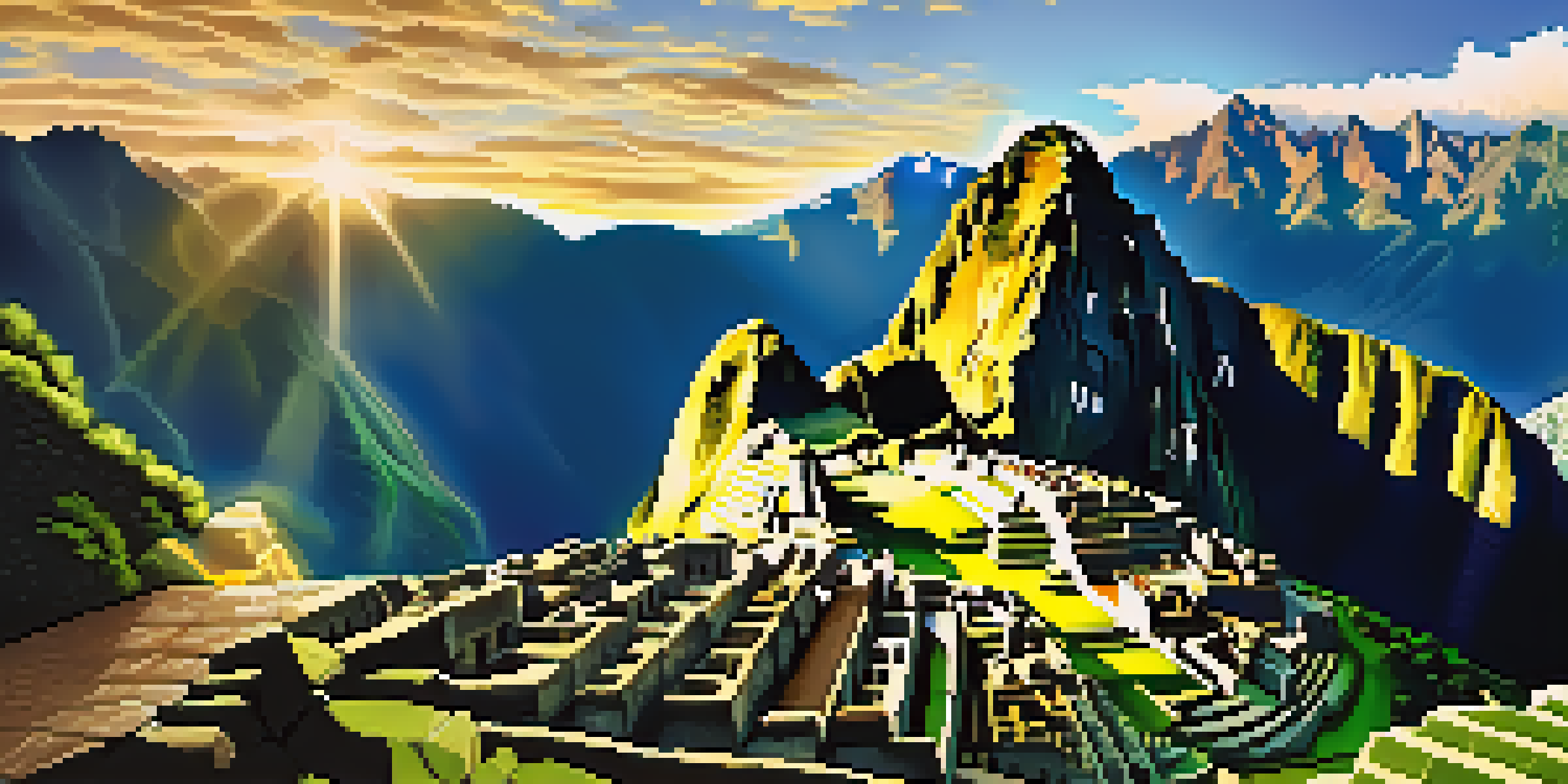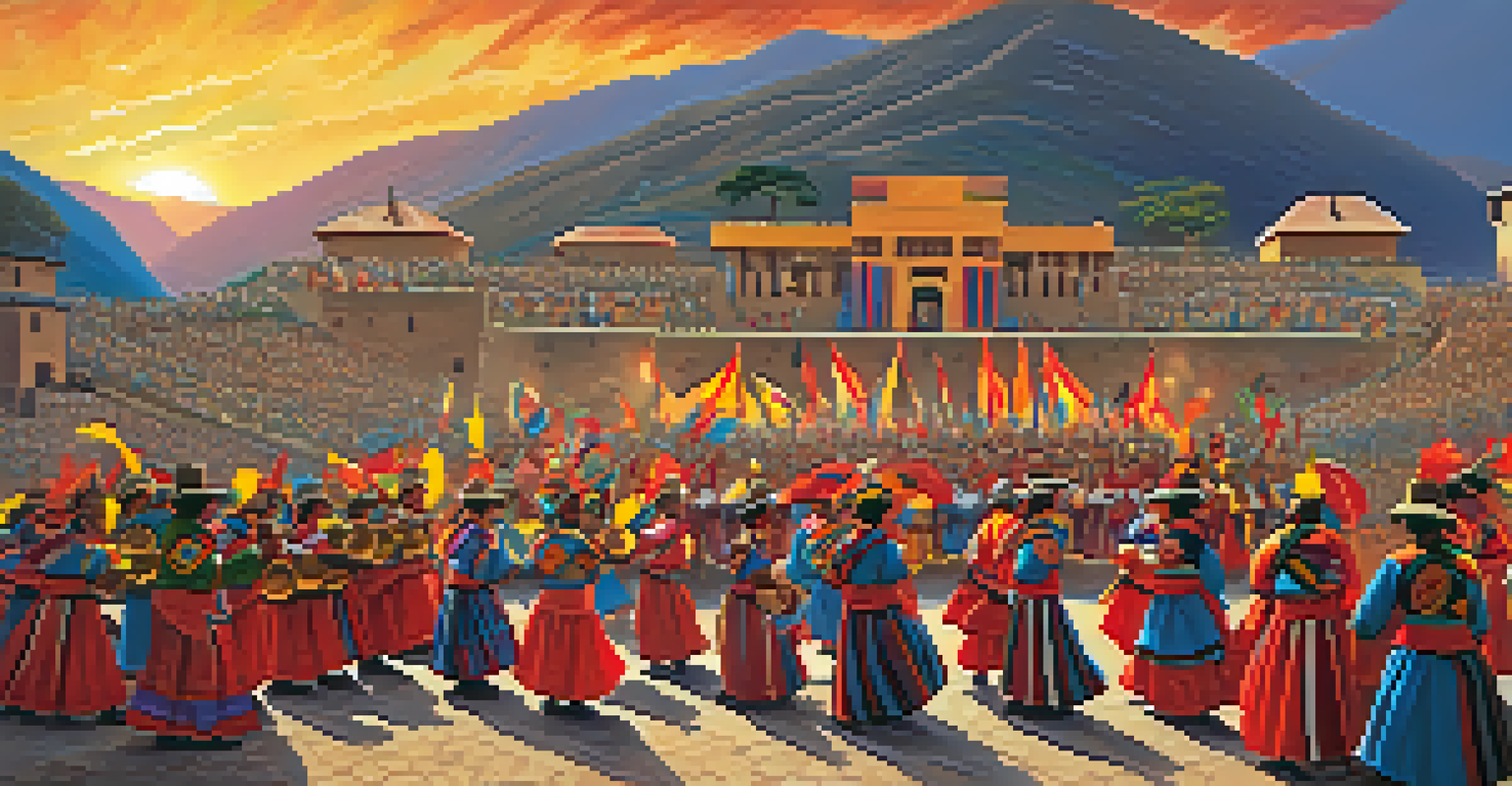Cultural Heritage in Peru's National Parks: A Unique Experience

An Overview of Peru's National Parks and Their Importance
Peru is home to some of the most breathtaking national parks in the world, rich in biodiversity and cultural heritage. These parks not only protect the unique ecosystems but also preserve the ancient traditions and histories of the indigenous peoples. Each park tells a story, intertwining the natural beauty of the landscape with the cultural narratives of its inhabitants.
In every walk with nature one receives far more than he seeks.
From the towering Andes to the lush Amazon rainforest, Peru's national parks serve as a sanctuary for both wildlife and cultural practices. They provide a unique opportunity for visitors to engage with the land and its history, offering a deeper understanding of Peru's identity. This connection to both nature and culture makes these parks invaluable.
Exploring these areas allows for a glimpse into the lives of the people who have called this land home for centuries. As you wander through the trails, you’ll find ancient ruins, traditional farming practices, and vibrant festivals, all of which highlight the rich tapestry of Peru's cultural heritage.
The Significance of Indigenous Cultures in National Parks
Indigenous cultures are the heartbeat of Peru's national parks, enriching the experience of visitors. These communities have lived in harmony with nature for generations, developing sustainable practices that honor the land. Their deep connection to the environment is reflected in their customs, art, and spirituality.

For example, the Quechua people, who inhabit regions around parks like Machu Picchu, have a profound respect for the mountains, which they consider sacred. Their traditions, including weaving and agriculture, continue to thrive, offering visitors a chance to engage with these age-old practices. This interaction fosters a greater appreciation for the cultural significance of the landscapes.
Cultural Heritage Enriches Parks
Peru's national parks are deeply intertwined with indigenous cultures, offering visitors a unique opportunity to engage with both the land and its rich traditions.
By respecting and learning from these indigenous cultures, visitors can gain insights into sustainable living and the importance of preserving heritage. This cultural exchange not only benefits the local communities but also enriches the travel experience, making it more meaningful.
Exploring Ancient Ruins Within the Parks
One of the most captivating aspects of Peru's national parks is the presence of ancient ruins, which provide a direct link to the past. Sites like the Incan city of Machu Picchu, nestled in the Andes, showcase the architectural brilliance and cultural sophistication of the Inca civilization. Visitors can explore these remnants and imagine what life was like centuries ago.
The land is where our roots are. The children must be taught to feel and see the land, to understand that it is the lifeblood of their culture.
Beyond Machu Picchu, there are numerous archaeological sites scattered throughout the national parks, each with its own unique story. For instance, the ruins of Chan Chan in the Trujillo region reflect the legacy of the Chimu civilization. These landmarks serve as reminders of the ingenuity and resilience of the cultures that once thrived in this region.
Walking among these ruins offers a tangible connection to history, inviting reflection on the lives of those who came before us. It's a chance to appreciate not just the structures themselves, but also the cultural narratives and traditions that have persisted through time.
Festivals and Cultural Events in Peru's Parks
Experiencing local festivals is one of the most vibrant ways to appreciate cultural heritage in Peru's national parks. Events like Inti Raymi, the Festival of the Sun, are celebrated with colorful parades, traditional music, and dance, drawing visitors into the heart of Andean culture. These festivities are not just entertainment; they embody the community's connection to their ancestors and the earth.
In many parks, visitors can participate in these celebrations, providing an immersive experience that deepens their understanding of local customs. Engaging with the local community during these events fosters a sense of connection and respect for the culture. It's a wonderful way to witness firsthand how tradition continues to thrive in contemporary society.
Ancient Ruins Connect Us to History
The presence of ancient ruins in Peru's parks allows travelers to directly link with the past, appreciating the architectural brilliance and cultural narratives of earlier civilizations.
These festivals often coincide with agricultural cycles, showcasing the relationship between the people and their environment. By partaking in these events, travelers can gain insight into the significance of these practices, creating lasting memories that transcend mere sightseeing.
Wildlife Conservation and Cultural Heritage
The preservation of cultural heritage in Peru's national parks goes hand in hand with wildlife conservation. Many indigenous communities are stewards of the land, actively participating in conservation efforts that protect both their culture and the environment. This dual focus ensures that traditional practices can continue alongside wildlife protection.
For instance, in the Tambopata National Reserve, local communities engage in ecotourism, promoting sustainable practices that benefit both their culture and the ecosystem. This approach not only helps to conserve biodiversity but also empowers local people by providing them with economic opportunities through cultural exchanges with visitors.
By understanding the connection between wildlife conservation and cultural heritage, visitors can appreciate the complexity of these ecosystems. This awareness encourages responsible travel practices that support both the environment and the communities that call these parks home.
Sustainable Tourism: A Path to Cultural Preservation
Sustainable tourism is vital for preserving the cultural heritage of Peru's national parks while providing economic support to local communities. By choosing responsible travel options, tourists can minimize their impact on the environment and ensure that their presence benefits the local culture. This approach nurtures a respectful relationship between visitors and the indigenous peoples.
Participating in guided tours led by local experts offers a unique perspective on the cultural significance of the sites and fosters a deeper connection to the land. These tours often include insights into traditional practices and allow travelers to support local artisans and businesses, promoting economic sustainability.
Sustainable Tourism Supports Communities
Promoting sustainable tourism in these national parks fosters economic opportunities for local communities while ensuring the preservation of their cultural heritage.
As more travelers seek authentic experiences, the demand for sustainable tourism continues to grow. This shift not only helps in preserving cultural heritage but also encourages the continuation of age-old traditions, ensuring they remain vibrant for future generations.
Conclusion: Embracing Peru's Rich Cultural Tapestry
Exploring Peru's national parks is more than just a journey through stunning landscapes; it's an opportunity to engage with a rich cultural tapestry. The interplay between nature and culture creates a unique experience that leaves a lasting impression on visitors. By embracing this cultural heritage, travelers can contribute to its preservation and appreciation.
Through the stories of indigenous peoples, the celebration of festivals, and the exploration of ancient ruins, each visit becomes a personal connection to the land's history. This deeper understanding fosters respect and admiration for the traditions that have shaped Peru's identity over generations.

Ultimately, preserving cultural heritage in the context of national parks enhances the travel experience for everyone. It encourages a more meaningful exploration of Peru, allowing us all to be part of its ongoing narrative, one that celebrates both its natural wonders and its rich cultural heritage.